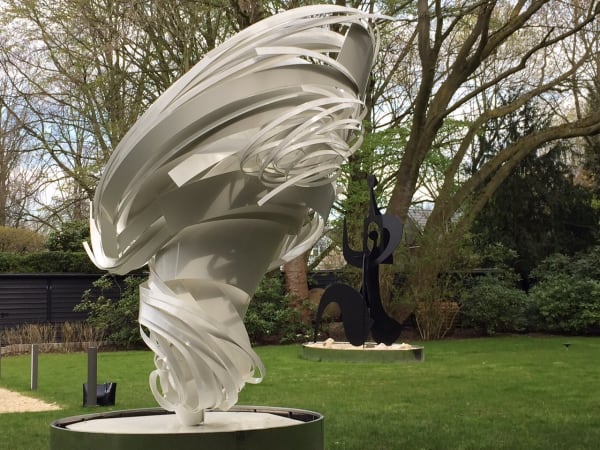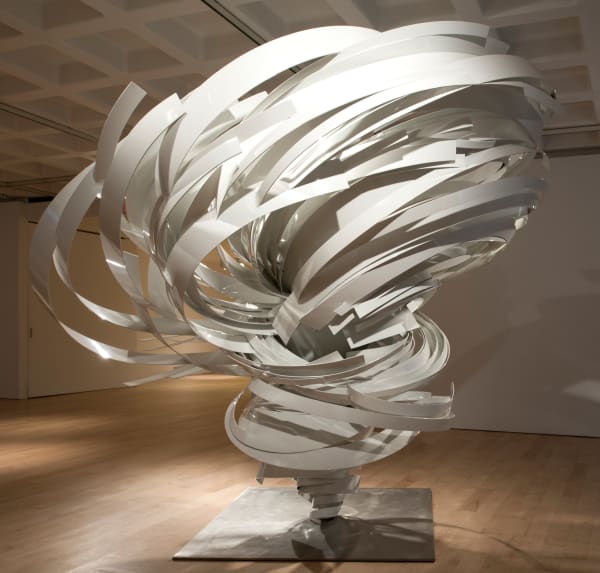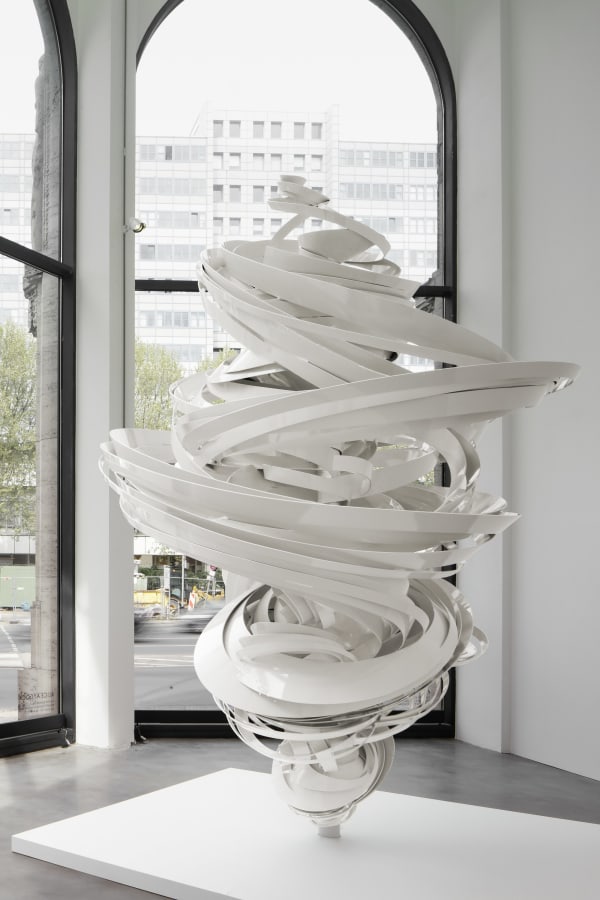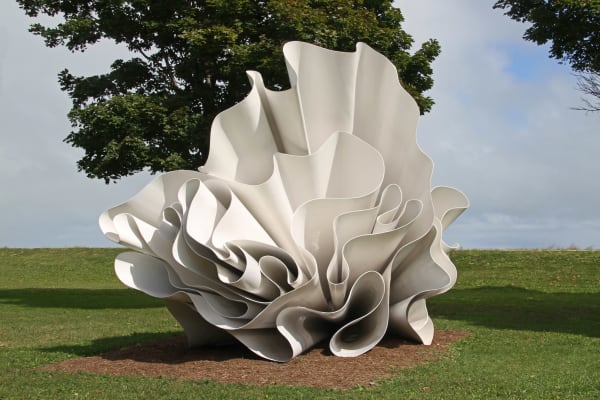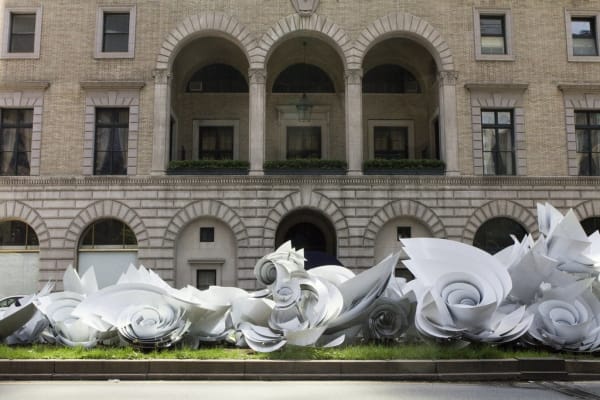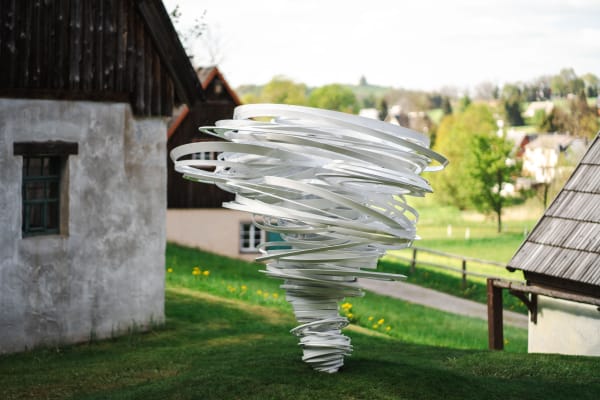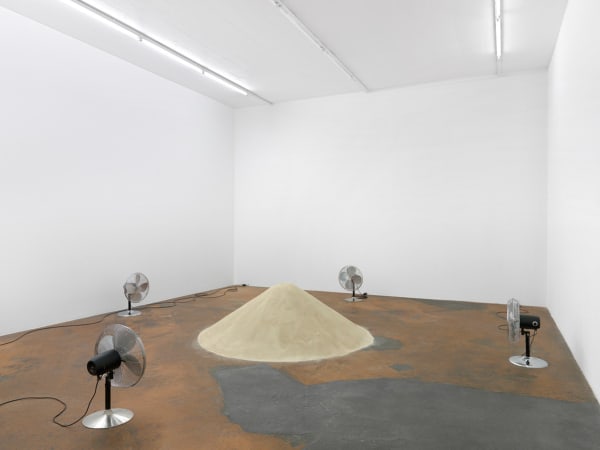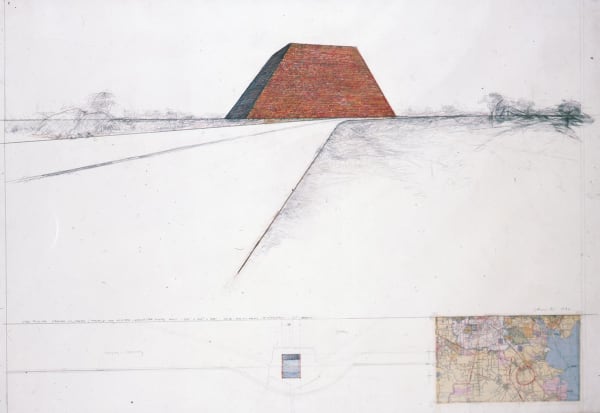-
About
Alice Aycock was born in Harrisburg, Pennsylvania, in 1946. In the 1970’s she was one of the youngest members of the circle of New York artists around Gordon Matta-Clark and the 112 Greene Street Gallery. Aycock first gained international recognition with her contribution to Documenta 6 (1977), The Beginnings of a Complex… . In her often large-scale sculptures and installations Aycock channels various themes; from cybernetics, phenomenology, physics, post-structuralism, information-overload, scientific discoveries, and computer programming to create works that sit on the cross-section between architecture and sculpture, eliciting both intellectual and emotional responses from their viewers.
Alice Aycock studied at Douglass College in New Brunswick and at Hunter College in New York City. She has received numerous awards, including the Lifetime Achievement in Contemporary Sculpture Award from the International Sculpture Center in Hamilton (2017), the International Association of Art Critics Award (2014), the Anonymous Was a Woman Award (2013) and the Americans for the Arts Public Art Award (2008). Her work has been presented in exhibitions around the world, including solo shows at MoMA, MCA Chicago, Serpentine Gallery, Royal Djurgården, Stockholm, as well as comprehensive European museum retrospectives in Germany, the Netherlands and Switzerland. In 1990, a second retrospective with the title Complex Visions was organized by the Storm King Art Center in Mountainville. Major group exhibitions include the 1979 and 1981 Whitney Biennials in New York, the Hirshhorn Museum and Sculpture Garden, Documenta (1977; 1987), the Venice Biennale (1978; 1980; 1982), LACMA and Haus der Kunst (2012), as well as the seminal exhibition Materializing ‘Six Years’: Lucy R. Lippard and the Emergence of Conceptual Art at the Brooklyn Museum (2012). Alice Aycock’s works can be found in the collections of MoMA, the Whitney Museum of American Art, the Brooklyn Museum, the Louis Vuitton Foundation, LACMA, the National Gallery of Art, Washington D.C., and many others. Numerous early and recent outdoor installations are permanently located in public and private collections in the US, Europe and Asia. Some of these pieces include: Liftoff, Des Moines International Airport, Des Moines, Iowa, East River Roundabout, New York, the New San Francisco Public Library, the Sacramento Convention Center, Star Sifter at Terminal One of JFK International Airport, Ghost Ballet for East Bank Machineworks in Nashville, What Every Traveler Needs To Know at the Philadelphia International Airport, and the recently completed The Game of Flyers Part Two at Washington Dulles International Airport. Permanent reconstructions of A Simple Network of Underground Wells and Tunnels from 1975 and Low Building with Dirt Roof (for Mary) from 1973 are installed at Omi International Arts Center in Ghent and the Storm King Art Center, respectively. Alice Aycock lives and works in New York City.
-
Works
-
-
Selected Works
-
Inquire about works by Alice Aycock
-
VideoExhibitions in the gallery
-

TWISTER GRANDE (TALL)
ALICE AYCOCK 27 April TO 29 June 2019For Gallery Weekend Berlin 2019, Galerie Thomas Schulte will present a new work by the...View Exhibition -

EARLY WORKS
ALICE AYCOCK 29 September TO 17 November 2018For Berlin Art Week 2018, Galerie Thomas Schulte opens a comprehensive exhibition showing early works...View Exhibition -

Alice Aycock
Alice Aycock 26 April TO 29 June 2013In line with this year’s Gallery Weekend Berlin (April 26–28, 2013), Galerie Thomas Schulte presents...View Exhibition -

Untitled Delight (Wavy Enneper)
ALICE AYCOCK 30 April TO 25 June 2011Coinciding with this year’s Gallery Weekend Berlin, Galerie Thomas Schulte will open the exhibition, Untitled...View Exhibition -

THE WONDERFUL PIG OF KNOWLEDGE
ALICE AYCOCK 11 June TO 31 July 2010Coinciding with this year’s second Gallery Weekend Berlin, Galerie Thomas Schulte will open its presentation...View Exhibition
Artist News-

Alice Aycock / Erzgebirgisches Freilichtmuseum, Kurort Seiffen, Germany
Part of the "Purple Path", Cultural Capital Chemnitz 2025 13 May 2024“C the Unseen” is the leitmotif of the European Capital of Culture 2025. Chemnitz and the region will welcome visitors from all over the world....Read more -

RECEPTION & TALK: ALICE AYCOCK & AMY OPPENHEIM, Parrish Art Museum, Water Mill, New York, USA
4 February, 11 am - 1 pm 1 February 2024Free for Members | $20 Adults | $18 Seniors | $15 Member’s Guest | Free for Students & Children 11 am, Reception 12 pm, Panel,...Read more -

Alice Aycock / Nasher Sculpture Center, Dallas, TX, USA
Group ehibition 23 September 2023 to 7 January 2024Using materials like earth, wind, water, fire, wood, salt, rocks, mirrors, and explosives, American artists of the 1960s began to move beyond the white cube...Read more -

Alice Aycock / McNay Art Museum, Butt Paperworks Gallery, San Antonio, Texas, USA
Solo Exhibition 7 September to 26 November, 2023The exhibition Alice Aycock: Moving through Time, is an intimate survey of the artist’s work over the course of five decades, which complements and...Read more -

Alice Aycock, Richard Deacon / Wilhelm Hallen, Berlin, Germany
Group Exhibition 9 to 17 September 2023Galerie Thomas Schulte is thrilled to be showing sculptural works by Richard Deacon and Alice Aycock in Wilhelm Hallen on the occasion of Berlin Art...Read more -

Alice Aycock, Marina Adams / Parrish Art Museum, Water Mill, NY, USA
Group Exhibition 20 August 2023 to 4 February 2024Celebrating the Museum’s 125th anniversary, the landmark exhibition Artists Choose Parrish honors the East End’s rich artistic legacy and brings greater attention to major artists...Read more -

Alice Aycock, Hamish Fulton / MAMCO Geneva, Switzerland
Group exhibition 4 October to 2022 to 29 January 2023Art created with and within the land (or the landscape) is far from a stable or even clearly delineated aesthetic category: Robert Smithson, for instance,...Read more -

ALICE AYCOCK / The Church in Sag Harbor, New York
Talk 2 September 2021Passers-by were stunned when Alice Aycock's great work 'Twister Grande (Tall)', 2019, was installed at The Church in Sag Harbor earlier this summer. The artist...Read more -

Alice Aycock / The Menil Collection, Houston TX, USA
Group exhibition 21 May to 19 September 2021Dream Monuments: Drawing in the 1960s and 1970s presents drawings that challenge the conventional idea of the monument as a permanent, grand, or commemorative form....Read more


